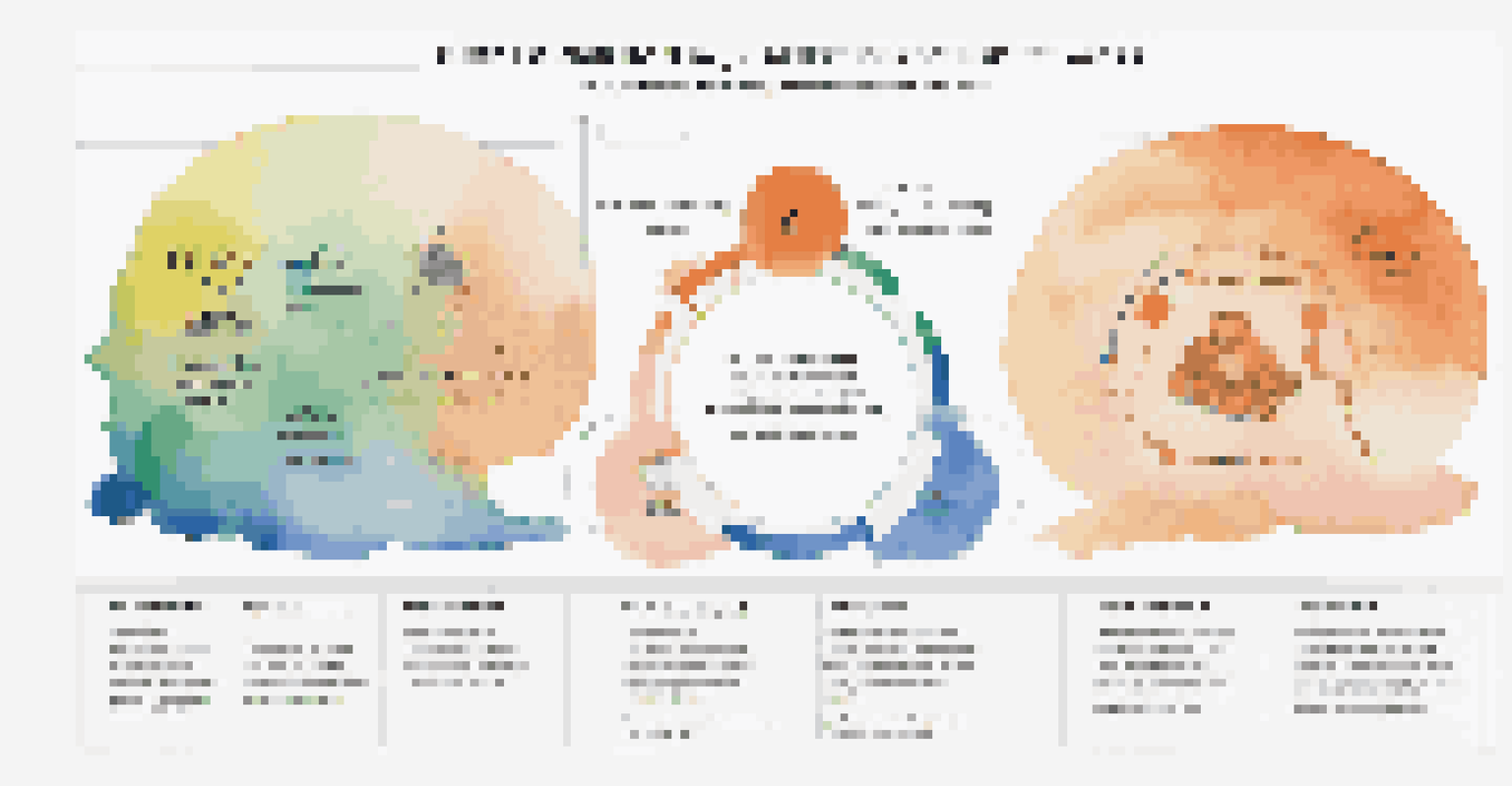Cognitive Load Theory: Insights for Designing Effective Assessments

Understanding Cognitive Load Theory and Its Importance
Cognitive Load Theory (CLT) is all about how our brains process information. It suggests that our working memory has limits, and when too much information is presented at once, learning can suffer. Think of your brain like a computer; if too many applications are running, it slows down and can crash.
The mind is like a parachute. It doesn’t work if it isn’t open.
This theory underscores the need for instructional design that considers these limits. For educators and assessment designers, understanding CLT can lead to more effective teaching strategies. By reducing unnecessary cognitive load, learners can focus better on the essential tasks at hand.
Ultimately, applying CLT can enhance student learning and retention. When assessments are designed with cognitive load in mind, students are more likely to demonstrate their true understanding of the material. It’s about making learning more efficient and effective.
Three Types of Cognitive Load: Intrinsic, Extraneous, and Germane
Cognitive Load Theory identifies three main types of cognitive load: intrinsic, extraneous, and germane. Intrinsic load is related to the complexity of the material itself, while extraneous load refers to how that material is presented. Germane load, on the other hand, is the mental effort required to process and understand the information.

For example, a math problem with a lot of unnecessary wording can increase extraneous load, making it harder for students to focus on the mathematical concepts. Conversely, a well-structured problem can reduce extraneous load, allowing intrinsic load to be more effectively managed. Understanding these distinctions helps in creating assessments that minimize distractions.
Cognitive Load Affects Learning
Cognitive Load Theory highlights how the limits of working memory can impede learning when too much information is presented at once.
By balancing these types of load, educators can design assessments that promote deeper learning. This balance allows students to engage more meaningfully with the material, ultimately leading to better outcomes. It’s essential to strive for that sweet spot where learners can thrive without feeling overwhelmed.
Designing Assessments with Cognitive Load in Mind
When designing assessments, one must consider how to present information clearly and concisely. For instance, using bullet points or numbered lists can help break down complex information into digestible parts. This approach reduces extraneous load, making it easier for students to focus on what’s important.
Learning is not the product of teaching. Learning is the product of the activity of learners.
Additionally, providing clear instructions and examples can guide learners through the assessment process. Imagine you're trying to solve a puzzle, but the instructions are vague—it's frustrating! Clear guidance can alleviate confusion and keep cognitive load manageable.
Lastly, incorporating varied types of questions can help engage different cognitive processes. For example, mixing multiple-choice questions with short answers can stimulate different areas of understanding. This diversity not only keeps assessments interesting but also accommodates various learning styles.
Utilizing Visual Aids to Enhance Learning
Visual aids, like diagrams and charts, can significantly help in reducing cognitive load. They provide learners with a visual representation of complex concepts, making them easier to grasp. Think about how a well-designed infographic can convey information in a way that text alone cannot.
In assessments, incorporating visuals can help clarify questions and reduce the burden on working memory. Instead of processing a lengthy description, students can focus on the visual element, which often communicates ideas more efficiently. This strategy is particularly effective for subjects that involve complex relationships or processes.
Design Assessments Thoughtfully
Effective assessment design should minimize extraneous cognitive load by presenting information clearly and using varied question types.
Moreover, visuals can also serve as prompts that trigger prior knowledge, facilitating connections between new information and what students already know. This linkage is crucial for effective learning, as it encourages deeper understanding and retention. Ultimately, using visuals smartly can transform assessments from overwhelming tasks into engaging learning experiences.
Feedback: A Key Component of Effective Assessments
Feedback is essential in the learning process, as it provides students with insights into their performance. When assessments include timely and constructive feedback, it not only helps learners understand their mistakes but also reinforces their learning. For example, if a student receives feedback on a math problem, they can identify where they went wrong and learn from it.
Incorporating feedback into assessments can also reduce cognitive load by clarifying expectations. When students know what is expected of them, they can focus their mental resources on meeting those expectations rather than guessing what they need to improve. This clarity can lead to better performance and increased confidence.
Moreover, fostering a culture of feedback encourages a growth mindset, where students view challenges as opportunities for improvement. This mindset is crucial in navigating the complexities of learning, as it helps students embrace errors as part of the journey. Therefore, effective feedback mechanisms are vital for creating assessments that truly support learning.
The Role of Practice in Reducing Cognitive Load
Practice is a cornerstone of mastering any skill, and it plays a significant role in reducing cognitive load during assessments. When students practice regularly, they become more familiar with the material, which allows them to process information more efficiently. Imagine learning to ride a bike; the more you practice, the easier it becomes, and soon it requires less cognitive effort.
In the context of assessments, providing opportunities for practice can help students develop automaticity, where familiar tasks become second nature. This means they can focus on more complex aspects of the assessment rather than getting bogged down by basics. For example, practicing math problems allows students to solve them quickly without overthinking each step.
Feedback Enhances Learning Outcomes
Incorporating timely and constructive feedback in assessments helps students understand their mistakes and boosts their confidence.
Furthermore, incorporating spaced repetition into practice sessions can enhance retention and recall. This method involves revisiting material over increasing intervals, which solidifies understanding and reduces cognitive load during assessments. Overall, the more prepared students feel, the less cognitive strain they'll experience when faced with evaluation.
Creating a Supportive Assessment Environment
A supportive assessment environment is crucial for reducing cognitive load and fostering effective learning. This includes creating a physical space that is free from distractions, allowing students to focus entirely on their assessments. Think of a calm classroom as a serene garden—it's much easier to think clearly in a peaceful environment.
Additionally, emotional support plays a vital role in helping students manage their cognitive load. When students feel anxious or unsupported, their cognitive resources are drained, making it harder to concentrate. Encouraging a positive mindset and reassuring students can help them approach assessments with confidence.

Lastly, providing resources and tools during assessments can alleviate cognitive load. Allowing students to use calculators or reference materials can help them focus on higher-order thinking rather than getting stuck on basic calculations. By fostering a supportive environment, educators can pave the way for successful assessments and deeper learning.